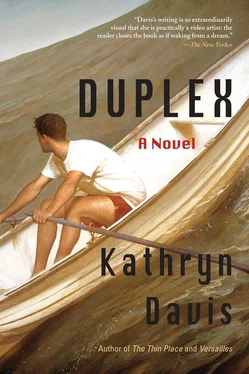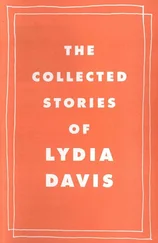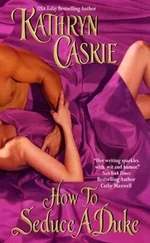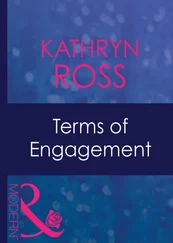Mary had to struggle to keep the large canvas she gripped in both hands from catching the wind like a sail and carrying her off.
“Where are you going?” called the blond boy from Cast Drawing. They’d been assigned to the same small room that morning together with an immense Roman head, both of them reduced to helpless laughter by the bust’s egglike eyeballs.
“Home,” Mary told him, “to work,” and he told her she was crazy.
“The Latvians are having a party,” he said. “No one does homework in art school.”
The question of genius came up during the day but at night it didn’t matter. Often at night Mary would find herself in the bed of someone whose paintings she couldn’t bring herself to look at by day. Everyone got drunk or high at the parties; the apartments were small and poorly heated and you could hear living creatures walking around in the walls. One boy was a pointillist, meaning when she agreed to pose for him in the nude it took forever. The blond boy only did paintings of rabbits, the big gray hares that were everywhere now, pale-eyed and serious, appearing in the middle of the city streets reared up on their hindquarters as if automobiles posed no threat, though you could see their dead bodies everywhere. “They have gray eyes like you,” the boy told Mary, as if she should feel complimented to have her eyes compared to a rabbit’s. Eddie used to say her eyes were silver.
After they moved into the new house, Walter insisted on hanging one of Mary’s paintings on the living room wall above the sectional sofa, even though she asked him not to. He thought she was being falsely modest, but the painting reminded Mary of a time in her life she’d rather forget. The painting was divided horizontally in three layers and represented the tripartite universe. It was inspired by the work of a Spanish monk who’d lived during the waning years of the first millennium when everyone thought the world was going to end.
The bottom layer was the color of copper, streaked with verdigris and violet, giving it a watery, immaterial look. It was the prettiest layer, even though it stood for the underworld, the bodies of the Aquanauts drifting through it like goldfish. Mary used the same gold leaf on them that she used for stars in the eggplant-colored top layer, neither fish nor stars having any moving parts. The gold leaf shone but enclosed anything it touched in a hard shell — the Spanish monk had used it for halos. If you looked closely you could see fine gold threads linking the stars and the Aquanauts, so thin they were almost invisible, passing through the red middle layer that represented life on earth. The threads tangled around the limbs of regular people trying to get their job done.
“What are these supposed to be?” her teacher asked Mary during a critique. “Air hoses,” Mary said, and he sighed and patted her on the head. He was old and often cruel; one time he threw a boy’s painting of a poinsettia plant out the window. He was always nice to the girls though, despite the fact that he never nominated them for any of the prizes, the good ones where you got to travel to a foreign country.
The subject of the painting was the Descent of the Aquanauts, a fact Mary had kept to herself until the day not long after they’d moved into the new house when Walter was putting something away in the cellar and found her paintings where she’d hidden them behind the hot water heater. She used to think there would be a greater sense of forward movement in her life, but now it seemed like where a person ended up was going to turn out to have everything to do with where she started.
“That’s what I went as to the masked ball,” she reminded Walter, as if he would ever forget. “An Aquanaut.”
Each October the art school put on a masked ball that was the talk of the town, attended by bohemians and socialites alike. Even the less talented students were good at making costumes, but the costumes the talented students made could take your breath away. One boy was an anamorphic blur that only became himself when you looked at him from the right angle. One girl opened like a Cornell box and a ghost flew out. There were two Brides Stripped Bare, two Saint Francises receiving stigmata, any number of Madame Xs, Winged Victories, sunflowers. The pointillist boy was a trick of light, a mirage. No one would go anywhere near him.
“You should be more careful,” her future husband had told Mary, leading her off the dance floor to the upstairs gallery where the drinks were being served. She couldn’t dance and the flippers didn’t help — to make matters worse she was hallucinating on mushrooms. When he introduced himself to her as Walter Woodard, she laughed. “I thought you were dead,” she said, and he told her she was thinking of his father.
Walter was wearing gold hoop earrings and dark glasses, a gold crown and a fuschia tunic with black leggings that showed off his long sleek legs. He fit right into the gallery, with its Moorish jewel-box arches. When Mary asked him what he was supposed to be, he said a sorcerer.
“Can’t you tell?” he said. “I can tell what you are.” Then he leaned down and put his lips to her ear. “You should leave the past alone,” he whispered. “Not everybody’s going to get the joke.”
“I’m not joking,” Mary said. She stood there leaning up against him in her black nylon bathing suit with its little black skirt and her white rubber bathing cap, looking up at him through her goggles, her air hose regally draped across the crook of one arm like a train.
“I worry about you,” Walter said, and he meant what he said.
Later he followed her into the bathroom and held her shoulders gently as she threw up into the toilet. Then he wet a paper towel with cold water and pressed it to her forehead. “Weren’t we in some bathroom together before?” Mary asked, and Walter reminded her she was tripping. “No!” Mary said. “I remember!” He helped her to her feet and took her back to his apartment, which was immense and lavish and looked out over the river. All night long the channel buoys tolled their bells as the big ships slid past them in the darkness.
“IT’S TOO BAD THINGS CAN’T STAY LIKE THIS FOREVER,” Walter said to Mary in the morning. They were lying in bed looking up at the ceiling, watching the light cast there by the river as it swam above them, a shifting net of many colors.
“Why can’t they?” Mary asked. Of course she thought she knew the answer — the light on the ceiling looked to her like it was being processed by an enormous mind and then filtered through an eye that despite the precautionary veils couldn’t bear to see her lying there one second longer. “I feel like I’ve always known you,” she said, clutching at straws, but as she said it she knew it was true. Walter felt familiar to her, beloved even. The truth is, he felt like Eddie, and why shouldn’t he?
“Oh, Mary,” he said. He took her in his arms and kissed her on the mouth. “It doesn’t work that way. You can’t always have known me — you know that, don’t you? It isn’t time that folds, it’s space. Didn’t you learn all this in school?” Walter was a good kisser — better than Eddie had ever been. “That teacher of yours, didn’t she teach you anything?”
“Are you talking about Space Drift?” Mary asked.
She thought she was making a joke like the one she’d made earlier at the masked ball, but Walter gave her a sharp look. “Don’t joke about things you don’t know anything about,” he said.
The next thing she knew they were married.
NOW MARY SAT AT HER SEWING MACHINE GUIDING material the exact pink of her prom dress ahead and to either side of the presser foot; as usual it felt like the machine was coming flying at her. The machine had been a wedding present from Downie. It was black with a gold design on its base; when she pressed the pedal the sound the machine made blocked out everything the way the crickets did: chchch chchchch chhhh.
Читать дальше












